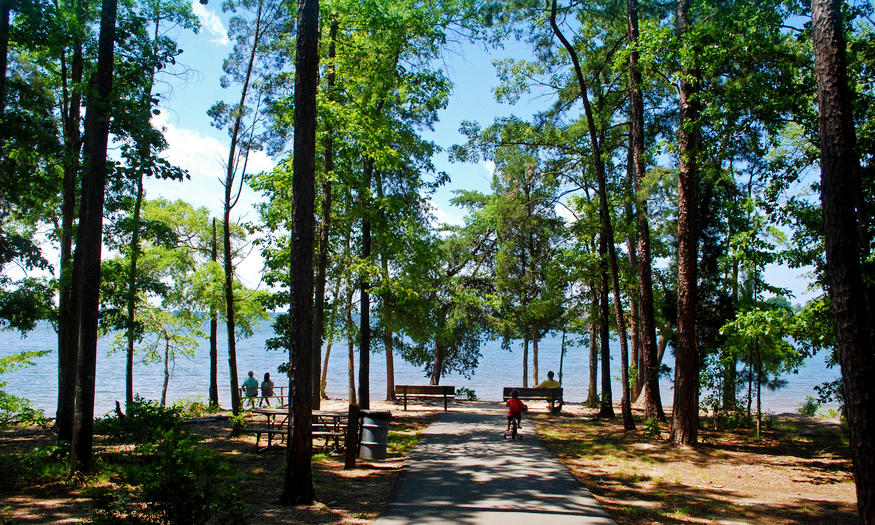
By Dave Vieser. What a difference a year can make. That’s certainly true when it comes to Lake Norman this summer. It’s the amount of precipitation our area has experienced which has made the difference. WeatherUnderground says we are more than five inches above average for rainfall through Aug. 6. You can see it in lake levels.
Compared to last year, there has been an increase of 9.1 inches of rain, according to Duke Energy spokeswoman Kim Crawford. What does that mean for the lake? “The additional rainfall has helped the basin recover from a Stage 1 drought in November 2016, to a Stage 0 drought on July 3, 2017,” she said.
Stage 0 is the first and lowest of the five drought stages and in the current instance is only being declared because of stream flow measurements. This means the lake is almost at “full pond” level. That high level presents both advantages and disadvantages for boaters.
“Everyone likes it when the lake is up high because it reduces the areas where the water can be shallow,“ said Ron Shultz, executive director of the Lake Norman Marine Commission. “However, high lake levels also can mean higher wakes from passing boats and that can have a negative impact on sea walls.”
Shoultz said the higher lake levels can also give new boaters a false sense of security since the lake will not always be this high.
An unusually high lake level keeps Duke Energy on its toes. “We manage the chain of 11 lakes along the river including Lake Norman and operate the 13 hydro stations as an integrated system,“ Crawford said. “To do this, we monitor the weather and rain forecasts daily and move water as needed depending on which part of the basin is affected.”
For example, during April and May, which were very wet months, Lake Norman was less nearing full pond and Duke released water before and during the rain storms to lower reservoirs to more normal levels and create storage capacity for future storms.
With the lake at high levels so far this season, one might assume that boating volume on the lake has been higher than last season, but that’s not necessarily the case. Local lake enforcement agencies believe the frequency of afternoon thunderstorms this year has actually cut down lake use from last summer when many days featured no rain at all.
So, with the lake at a higher level this summer, a few tips for boaters:
1. Despite the lake level, continue to obey the shoal caution markers.
2. Obey the No Wake signs.
3. Watch the weather. The afternoon thunderstorms we’re having this summer can be fierce.





